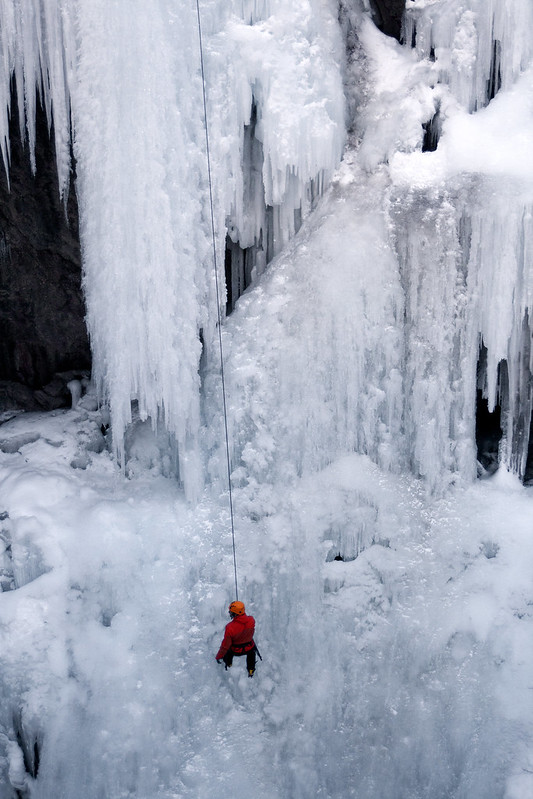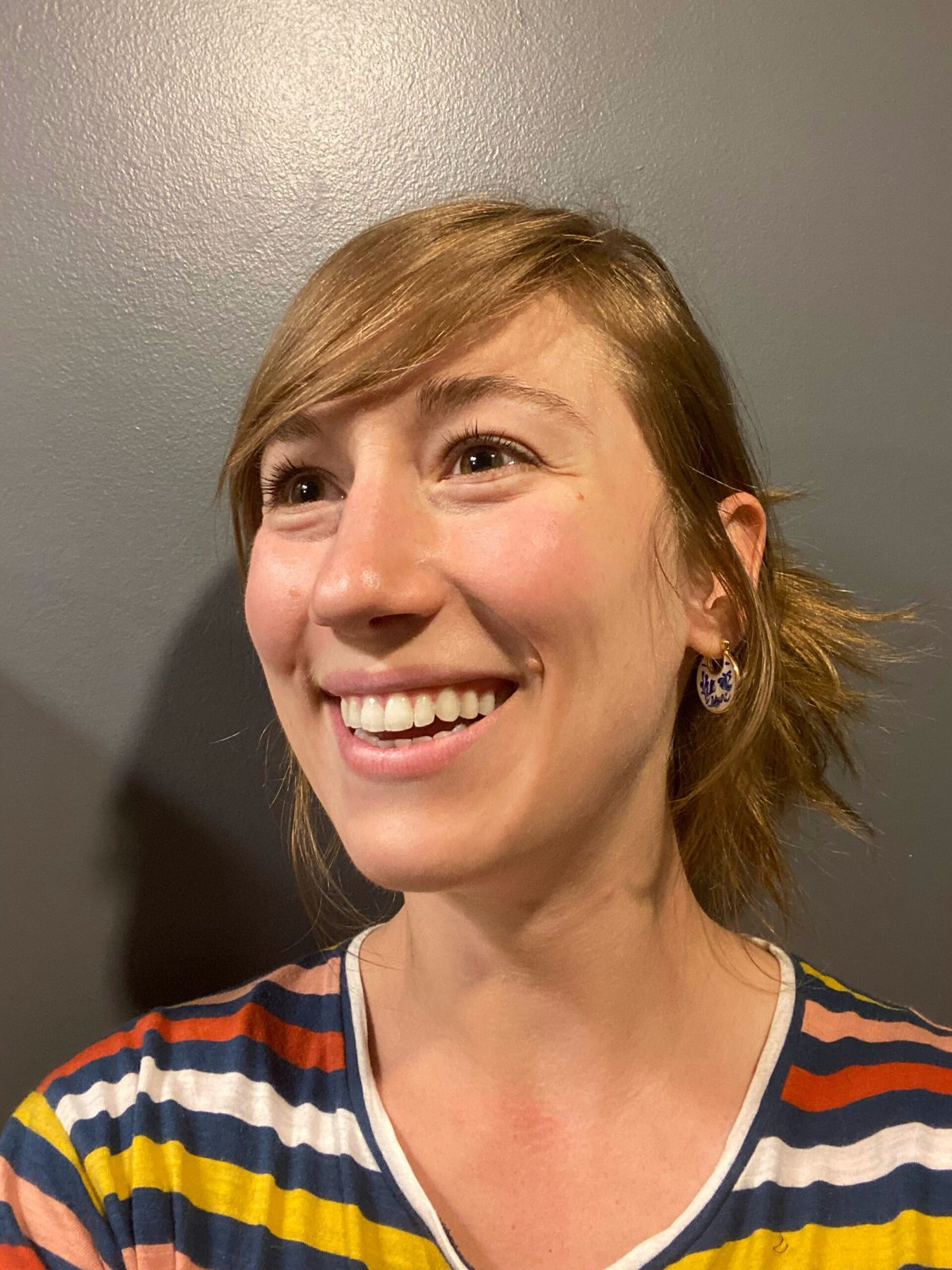Ouray, Colorado, is only a few blocks wide. It’s hemmed in by soaring cliffs, and it fills the length of a narrow valley tucked deep within the San Juan Mountains. The houses are wrapped in colorful siding — and draped in snow for half the year. Mountains crowd the skyline; hot springs bubble up from the ground. As of 2021, the town population was 923. Visitors call it “The Switzerland of America.”
Ouray wouldn’t exist without mining: the town was founded in 1876 amid a silver boom. But today, it’s also a major hub for a very different activity: ice climbing. The Ouray Ice Park, a free city park and local nonprofit, manages hundreds of routes of vertical ice that attract climbers from all over the world.
In recent years, however, the park has suffered from critical water shortages. Between persistent drought and global warming, the park hasn’t been able to provide enough ice for climbers, threatening both this free recreational resource and the single most important driver of Ouray’s winter economy.
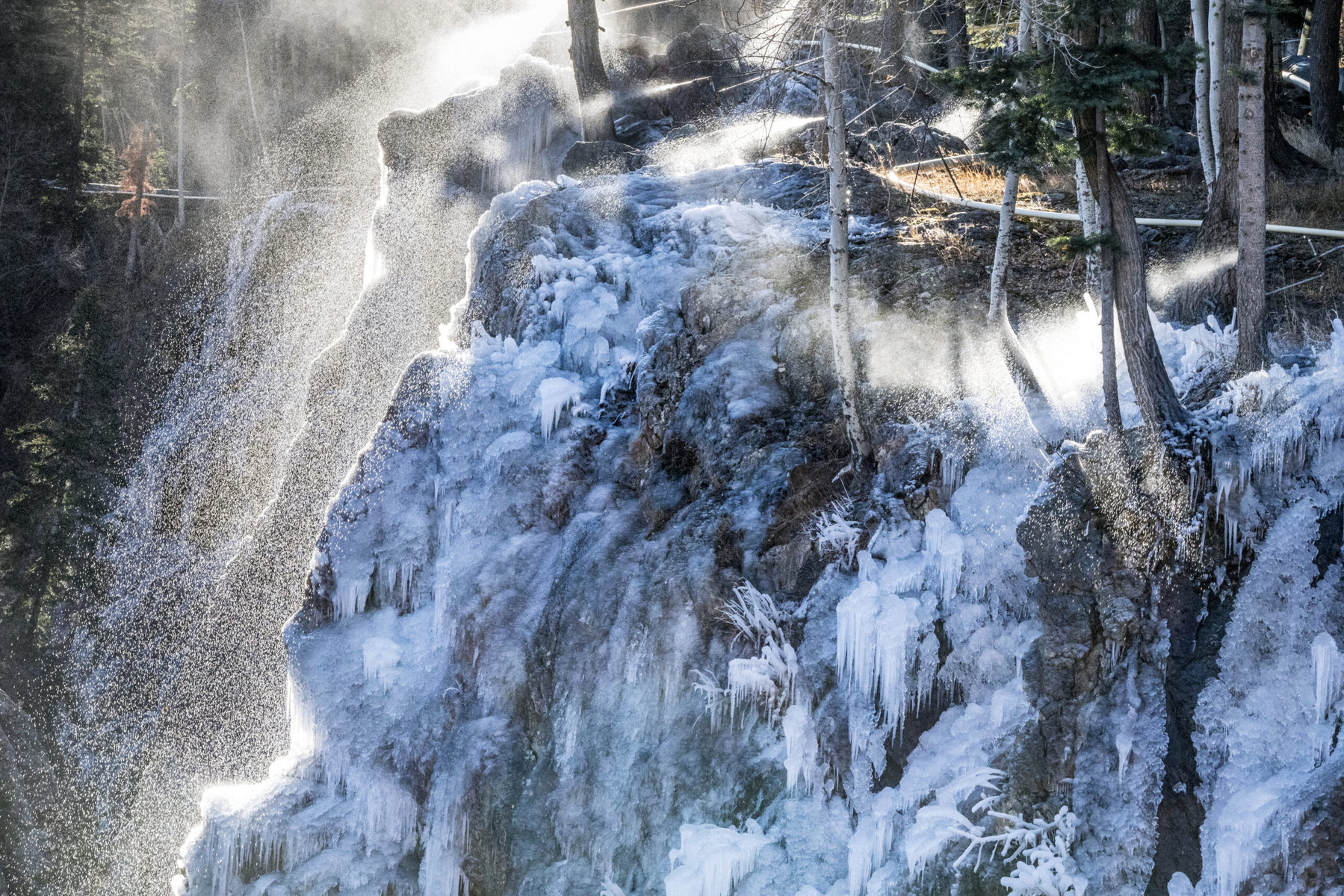
In much of the American West, recreation and extraction are often at odds. But last year in Ouray, a group of ice climbers and silver miners shook hands on a deal that could set a unique example for finding community-based solutions to the West’s water crisis. As part of the deal, the mine freely gave away millions of gallons of water to the City of Ouray, expressly to be used in building recreational ice flows. It might just be enough to insure the town’s economic future.
For decades after the silver boom calmed, Ouray struggled to stay afloat. Summer tourism brought some relief, but in the winter, the place was a ghost town.
“It was hard to stay open in the winter and not just hemorrhage money,” says Tom Fedel, owner of Ouray Grocery.
Then, in the 1970s, climbers discovered the area. Like the miners, these folks were rugged and carried axes, but they were after a different sort of silver.
The hills around the San Juan Mountains range from 8,000 to more than 14,000 feet above sea level. In the winter, these hills are covered with frozen cascades, waterfalls that freeze solid into shimmering ribbons of ice. The longest are up to 400 feet in length, making the San Juans home to some of the richest deposits of climbable ice in the country.
Crushed by negative news?
Sign up for the Reasons to be Cheerful newsletter.By the mid-1980s, the area was attracting high-caliber ice climbers from all over the United States, including decorated alpinists like Jeff Lowe and Kitty Calhoun. Many, like Calhoun, stuck around, establishing guide services and other businesses.
To supplement the naturally occurring backcountry ice (and create safer, more accessible options for climbing), Lowe and other local climbers started running garden hoses along the lip of the Uncompahgre River Gorge, a narrow canyon right on the edge of town. The water would freeze, plastering the gorge walls with hundreds of feet of vertical ice.
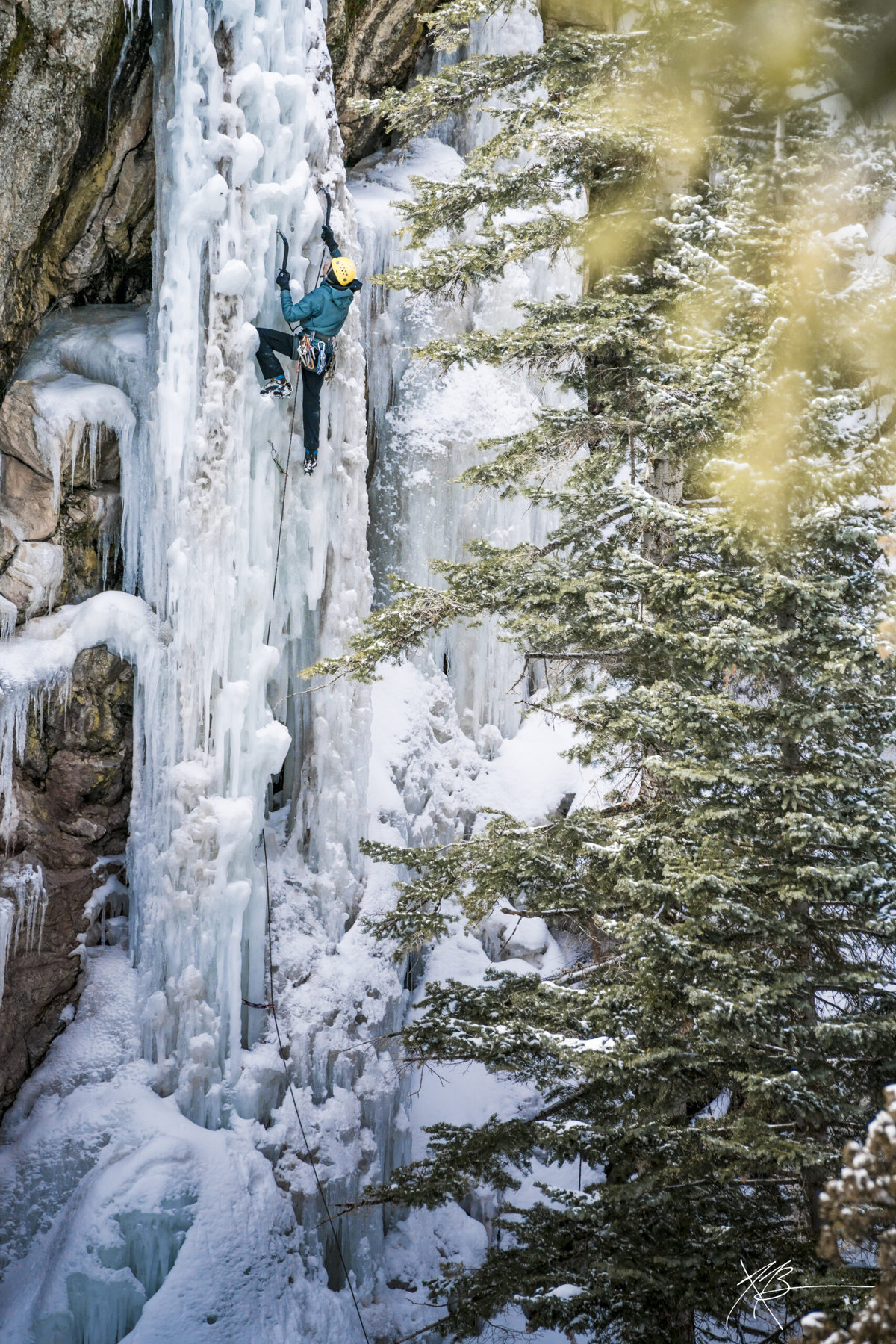
Over time, the climbers installed bigger and more sophisticated pipes. They sometimes sought the aid of local mining engineers who knew how to work with the rock and temperamental weather. Of course, that’s not to say everyone always got along.
“Mining is a highly destructive industry,” says Logan Tyler, a lifelong Ouray local and founder of climbing gym and guide service Basecamp Ouray. “How can we call ourselves the Switzerland of America if we have this local mining operation? I know it employs a lot of people, but I just see more tailings piles and more environmental impact with no accountability.”
Conversely, many miners believe recreationists lash out against extractive industries without knowing what they’re talking about.
“I spent all my professional career working in open-pit and underground gold mining, and I know what mining is,” says Fedel. Fedel grew up in Ouray, the son of a silver miner, and worked as a mining engineer before taking over the grocery. “Modern mining is an entirely different animal when it comes to what they do for the environment.”
Ouray is a small town, and most folks try to see eye-to-eye on things, says Calhoun. But under the surface, tension simmered, especially as the ice park grew.
In the winter of 2022 to 2023, 24,000 climbers visited the park. That’s a lot of people — and a lot of revenue.
“The ice park makes a big difference financially for a business in this town over the winter months,” Fedel says. “I don’t know if a lot of businesses would be able to exist without it.”
An economic impact statement released in 2022 found that the ice park brought more than $18 million in revenue to the town of Ouray during that winter alone.
Ouray’s new silver boom was never meant to last. The ice park has a lot going for it, but at the end of the day, it still relies on an extremely ephemeral medium: ice.
Ice climbing has been getting more popular, Calhoun says, a spin-off effect of the rock climbing boom. But over the last few years, Colorado has suffered from serious drought. That meant that even when the park had the personnel and cold temperatures to make ice, it didn’t always have the water.
On top of that, the park didn’t have its own water supply. Instead, it relied on the city’s leftovers. So, paradoxically, the more ice climbers came to town — drinking water, flushing toilets, and taking showers all the while — the less water the park would have. Warming temperatures only made things worse.
“It felt like a losing battle,” says Basecamp’s Logan Tyler, who worked as an ice farmer in 2012 and then again in 2015. “We didn’t have enough water. Climbers were tearing the ice down faster than we could replace it. By 2019, things started to feel pretty dire.”
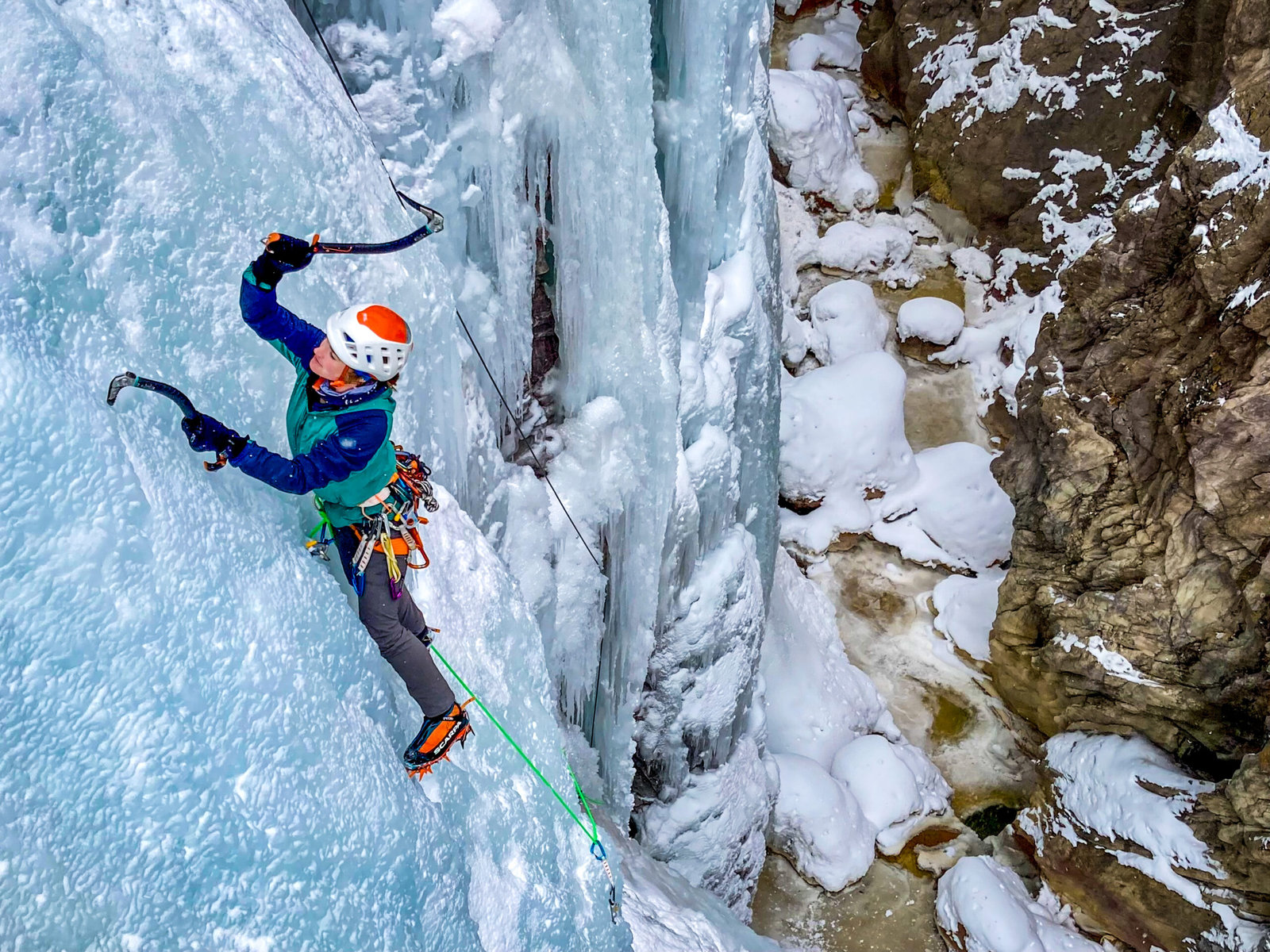
The park was desperate. Ouray Ice Park Executive Director Peter O’Neil found himself scrambling. He looked into rerouting water from higher up on the mountain, but that would have cost the park $3 million, not to mention drawn-out battles for permitting permission. The future of the ice park felt uncertain.
Then, in 2019, a local miner named Brian Briggs stumbled upon a solution.
At the time, Briggs, a seventh-generation Ouray local, was the CEO of Ouray Silver Mines, then an active mining operation just upstream from the ice park. He was sorting through the mine’s water rights — documents that give a company the right to use a certain amount of water per year — when he learned that the mine had 3.6 cubic feet per minute of water that it wasn’t using.
In the West, water is scarce, and water rights are highly coveted. According to Briggs, the going rate for an acre-foot of water in Colorado is $3,000 per day on average. The mine’s spare rights covered 8.5 acre-feet of water per day. With the right buyer, he could have leased those rights for $25,000. That’s right: $25,000 per day.
Instead, Briggs called up Silas Clarke, Ouray’s city administrator, and told him that Ouray Silver Mines was prepared to take its extra rights to the water courts. The mine would foot the bill for all the court proceedings and set up a 10-year lease agreement with the city of Ouray. Under this agreement, the city would lease the water from the mine for just $1 per year. All that extra water would then be earmarked specifically for ice park use.
The process took years. But in the spring of 2022, it was officially finalized.
“We now have access to five times more water than we had two years ago,” O’Neil says. “We had 150 routes open last year. This year, we had 215. Every year we’ve gotten complaints about crowding, but this year we didn’t get one.”
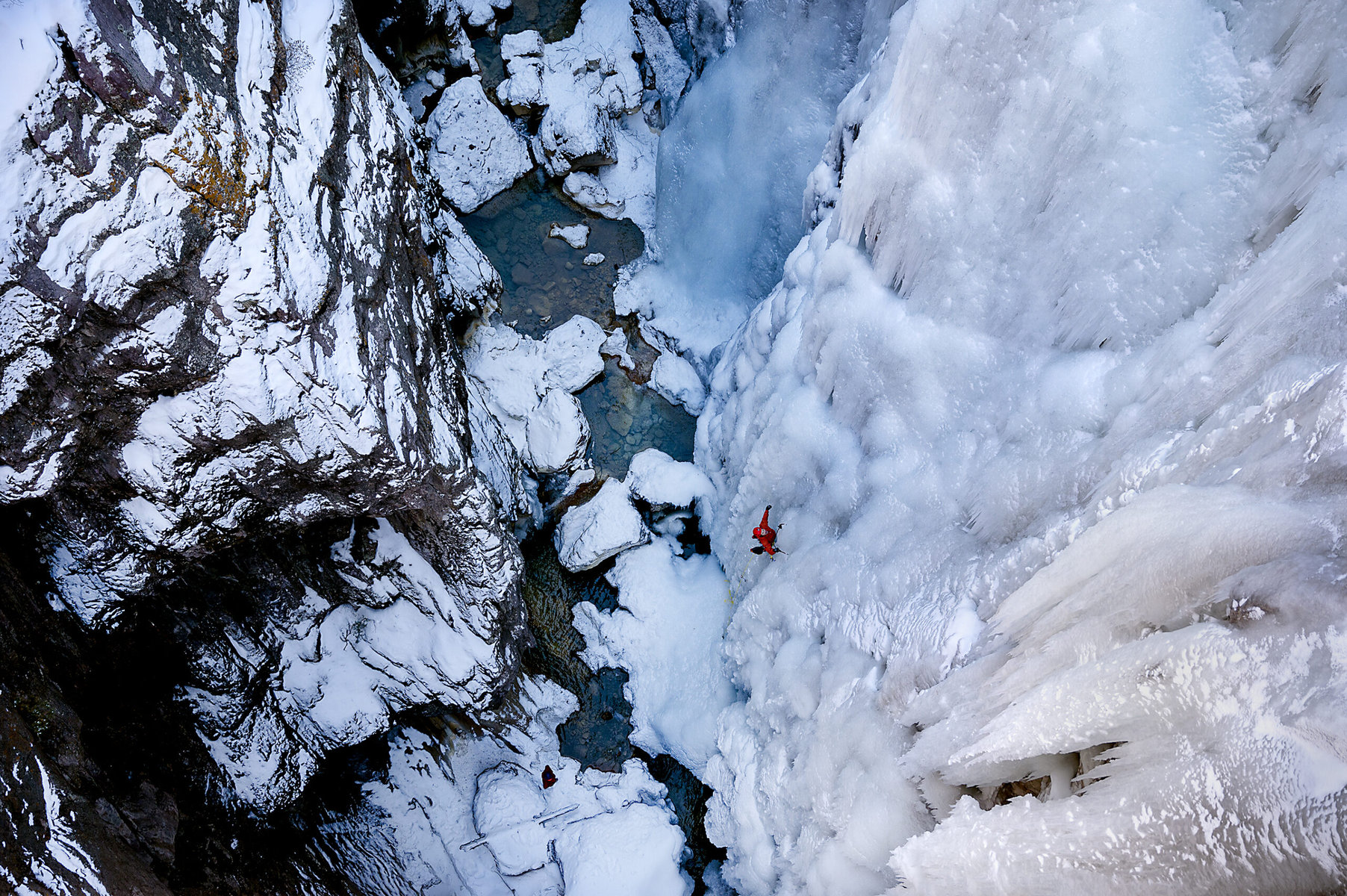
With more water — and therefore more ice — the park becomes safer for climbers, who can spread out and avoid tangling ropes or kicking down icicles on one another. Meanwhile, the city no longer has to worry about strains to its own water supply. And local business owners don’t have to worry about shortening seasons and the potential demise of their biggest winter revenue driver. The deal was a win-win, O’Neil says.
It was also a win for the mine. “As a mine, it’s important to be perceived as being a part of the community,” Briggs explains. “We were looking for ways to develop additional social license with climbers.” In fact, “social license” was a line-item on his budget. The issue: it was only for about $20,000.
“That $20,000 is high school basketball jerseys. It’s buying a pig or two at the local 4H fair,” he says. Giving away water rights, though? That, he could afford.
Over the course of the proceedings, the water rights deal did cost a little more than expected: about $40,000 total in legal and administrative fees. But the mine paid for all of it. The Ouray city and Colorado state governments, meanwhile, have been providing support and grants to the Ouray Ice Park, which is using those resources to lay new pipes and get the new water to the ice park more efficiently. Briggs calls it a trifecta: a non-governmental organization, a government and a for-profit company all working together for the good of the community.
As the world continues to warm and water remains precious across the West, water rights battles are likely to become even more fraught.
While the Ouray deal is a unique case, there are other opportunities for this kind of partnership across the country, especially given the current state of the Colorado River. In dry years, the river turns into an imperceptible trickle before it can reach the ocean. The issue is that government agencies have given away more water rights on the Colorado than there are gallons of water in the river. Smart water sharing and swapping could help alleviate those burdens and make sure there’s plenty of water — for rafters, anglers, farmers and wildlife alike.
There are other successful stories involving mines, too. In California’s San Bernardino Valley, the Bureau of Land Management (BLM) recently partnered with the San Bernardino Municipal Water District and a local concrete mine to conduct a land swap for the sake of water conservation. The swap let the water district conserve the land’s natural hydrology for water storage, and it gave the mine access to new minerals that could be extracted with minimal environmental impact. At the same time, the swap set aside more protected habitat for the endangered kangaroo rat, and the BLM was able to build a new 15-mile hiking trail. Like in Ouray, it was a win-win-win kind of deal.
Such creative partnerships give both Briggs and O’Neil hope that they’ll be able to find solutions that work for everyone. “This is the way it’s supposed to be,” says Briggs. “Every group has a different view, but you get everyone involved, and you look at the needs of the community, and you find ways to meet those needs.”


